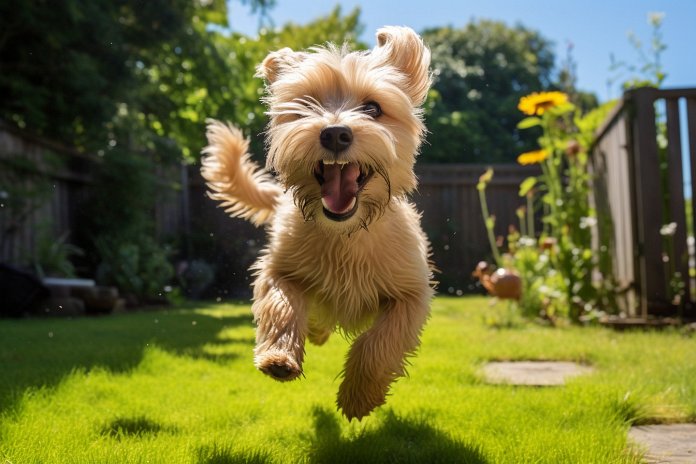
Can your dog feel fleas? The answer is yes! Just like you can feel a bug crawling on you, dogs can feel fleas moving on their skin. Fleas are more than just annoying, they can cause discomfort and health issues for your dog if left untreated. In this article, we will discuss the signs that your dog might have fleas, the body language cues they might display, and how to train your dog to deal with fleas.
Signs Your Dog Might Have Fleas
If your dog is infested with fleas, you may notice changes in their behavior such as excessive licking, biting, scratching, or restlessness. They may also scratch their ears against furniture or shake their head frequently. Inspecting your dog’s body and fur can also reveal signs of fleas, such as scratching, redness, blood, or dirt in certain areas like the armpits, groins, and ears.
Body Language
Your dog may display body language cues to indicate they are struggling with fleas. These cues include shaking, scratching, raising ears, turning head, twitching whiskers, dropping ears, shaking off, and ears back.
Other Signs
Other signs that your dog might have fleas include excessive licking, head shaking, anxiety or nervousness, obsessive ear scratching, ear flapping, nipping or biting skin, and a history of fleas.
History of Fleas and Dogs
Fleas have been feeding off animals for thousands of years, and dogs are one of their preferred hosts. Dogs can pick up fleas from their environment, including infested animals in their backyard or through contact with humans who have fleas on their clothes. Fleas can also be brought inside the house and infect other animals, leading to repeat infestations. Fleas can cause pain, itching, allergic reactions, blood loss, anemia, and the transmission of other parasites like tapeworms.
Science Behind Fleas and Dogs
Fleas are small, wingless bugs that live in your dog’s hair and feed on their blood. The most common species that affects dogs is the North American Cat Flea. Fleas go through four stages of life: egg, larvae, pupa, and adult. Adult fleas can live up to 4-6 weeks, causing damage to your dog if not treated.
How to Train Your Dog to Deal with Fleas
Once you have diagnosed your dog with fleas, it’s important to train them to deal with the healing process. This may involve getting them used to new collars, leashes, and bedding if the old ones cannot be sanitized. Basic commands like “stay” will be useful when applying flea medication or giving your dog a flea bath. Positive reinforcement and rewards for good behavior are recommended during the training process.
“Training your dog to deal with fleas: Tips and techniques for a smooth healing process”

Tips & Things to Know
1️⃣ Look for signs of fleas: If your dog is excessively scratching, biting, or licking themselves, it may be a sign of a flea infestation. Other signs to look out for include redness, blood, or dirt on their skin, especially in warm, dark areas like armpits, groins, and ears.
2️⃣ Pay attention to your dog’s body language: Your dog may exhibit certain body language cues like shaking, scratching, raised ears, head turning, twitching whiskers, dropped ears, or shaking off to let you know they are struggling with fleas. These cues can help you identify the issue and take action.
3️⃣ Take preventive measures and train your dog: To prevent and treat fleas, you can use flea medication and regularly inspect your dog’s coat. Train your dog to sit still during flea medication application by using basic commands like “stay.” Positive reinforcement and rewards can help make the process easier for both you and your dog.
Frequently Asked Questions, Answered ✅
1. Can dogs feel fleas on their bodies?
– Yes, dogs can feel fleas crawling on their skin and hair follicles, causing discomfort and itchiness.
2. What are the signs that my dog might have fleas?
– Signs of fleas in dogs include excessive licking and scratching, restlessness, biting, shaking their head, and paying special attention to their ears.
3. How do fleas affect dogs?
– Fleas can cause skin irritation, fur damage, mange, and can lead to self-inflicted injuries from excessive biting and scratching.
4. How do dogs get fleas?
– Dogs can pick up fleas from infested animals they come into contact with, both indoors and outdoors. Fleas can also be brought into the home on shoes and clothing.
5. How can I train my dog to deal with fleas?
– Training your dog to deal with fleas involves getting them used to new collars, leashes, and bedding, applying flea medication, and potentially giving them flea baths. Positive reinforcement and rewards for good behavior can be helpful in the training process.